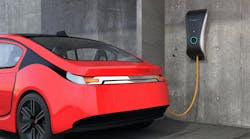Wall Street analysts sometimes drive me crazy. While there's no denying that many of them are highly educated dudes and dudettes with blue-chip MBA degrees in finance, some of their breezy evaluations of the stocks they cover can torpedo a stock's price for all the wrong reasons. I respect their financial acumen and know they spend hours dissecting a company's financial innards. But analysts overstep their boundaries when they attempt to sum up a company's position in a market and entire raison d'être (French phrase for “reason for existence”) in 50 words or less.
I got riled up about this again when rumors first starting surfacing about Siemens' plans for an Osram IPO (see “Newswatch” on page 7). In a Bloomberg report, James Stettler, an analyst at UniCredit in London, is quoted as saying, “The lighting industry faces huge changes. China is subsidizing local manufacturers and the business will eventually be commoditized. It makes sense to exit Osram to avoid getting out too late.”
I am not an ostrich with my head in the sand about the potential impact that LEDs will eventually have on the lighting market, but I think the concept of a complete commoditization of the business is a bit premature. Yes, LEDs are basically computer chips that light up, and engineers are teaching them to do an extraordinarily good job of that. And manufacturing them is a high-volume, low-profit business that one day may be totally dominated by Pacific Rim players. But right now, for all of the wonders of LEDs, the best T5/T8 fluorescent lighting systems and best-of-breed CFLs, halogen and HID lighting still produce a ROI that LEDs can't match. Zillions of square feet of office space, factories and homes are being lit quite efficiently by these conventional systems, thousands of salespeople are still out selling them like mad, and distributors still stock billions of dollars of the stuff in inventory. That all won't go away anytime real soon.
You can find all sorts of breezy analysis on the flip side of this equation, too, talking up and down stocks that focus either on manufacturers of LEDs like Cree Inc., Durham, N.C. (CREE), or manufacturers of the assembly-line equipment that produces LEDs, semiconductors and other electronic components, like Applied Materials Inc., Santa Clara, Calif., (AMAT) and Veeco Instruments Inc., Plainview, N.Y., (VECO). For instance, check out this analysis of the lighting end of the LED market by www.bedfordreport.com. “The light-emitting diode (LED) market has grown in recent years due to the rise in sales of consumer electronics products such as mobile phones and television screens. In addition LEDs are on the verge of overtaking both incandescent and fluorescent light bulbs in terms of use as governments, businesses and consumers seek to curb emissions. The rise in LED popularity has led to an overcrowded industry and a sudden surge in government-backed Chinese LED makers has eaten into the market shares held by the likes of Cree and Veeco Instruments.”
While it's too early to say which companies will dominate the LED market, there's no doubt LEDs will eventually change the lighting market as we know it. Consider:
-
GE and other major manufacturers are spending half their R&D dollars on LEDs.
-
Philips says LEDs will account for 50 percent of the residential lighting market by 2015.
-
The aisles of last year's LightFair were packed with LEDs, with relatively few exhibitors not showcasing them. Expect this trend to continue at LightFair in Philadelphia this month.
-
The click-through rates on any LED briefs published in Electrical Wholesaling's G-Biz e-mail newsletter are surging, as electrical distributors, reps, electrical contractors and other end users are in information-gathering mode on LEDs.
LEDs are changing the lighting biz, but you shouldn't get dazed by the glare of publicity surrounding them, or underestimate them because of some negative investment industry analyses.
R&D Still Alive and Well for Other Types of Lamps
I generally don't focus on new products in “Times and Trends,” but the GE Energy Smart Hybrid Halogen CFL bulb clearly illustrates my point about the importance on focusing on the entire lamp market and not just on LEDs.
One trend to watch in the lighting market is the development of alternatives to the least-efficient incandescent lamps. Manufacturers are racing to develop lamps that will meet the new federal lighting efficiency standards that will ban some of the most common incandescent lamps unless they meet tough new efficiency standards, starting in 2012.
The GE lamp is a hybrid halogen-CFL contained in an incandescent-shaped glass bulb. A press release announcing the launch says GE engineers figured out how to nestle an instantly bright halogen capsule inside the swirl of a compact fluorescent light bulb. The halogen element comes on instantly and turns off once the CFL comes to full brightness, thus preserving the energy efficiency of the bulb. All the workings of the bulb are contained in an incandescent-shaped glass bulb. These new GE lamps offer eight times the life of incandescent bulbs (8,000 hours versus 1,000 hours).
Said Kristin Gibbs, general manager of consumer marketing in that release, GE Lighting, “It looks like an incandescent in size and shape but it's really three bulbs in one. The instant brightness factor makes our new hybrid halogen-CFL more versatile than other CFLs. It's an optimal choice for use in hallways, stairways, kitchens, bathrooms and anywhere immediate brightness is essential. Simply flip that light switch and it's at your service — immediately.”










